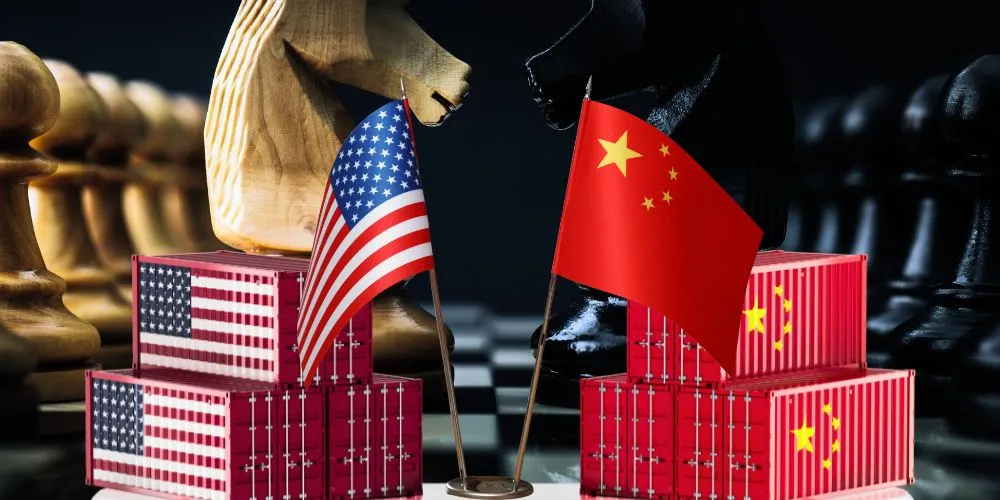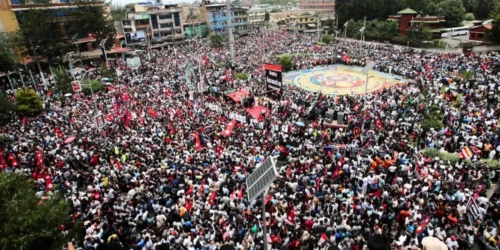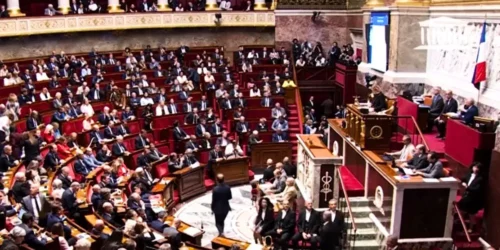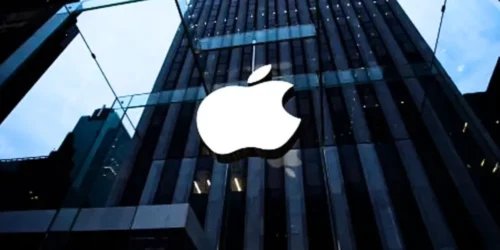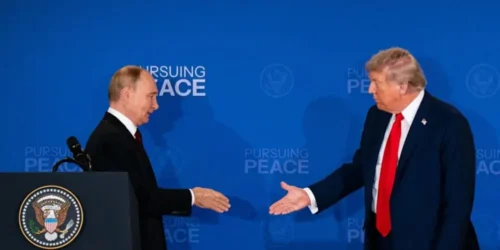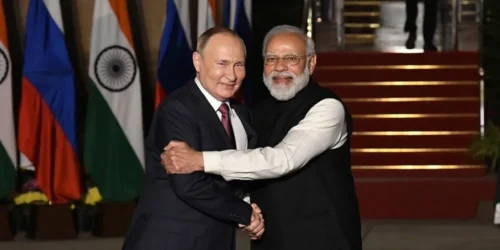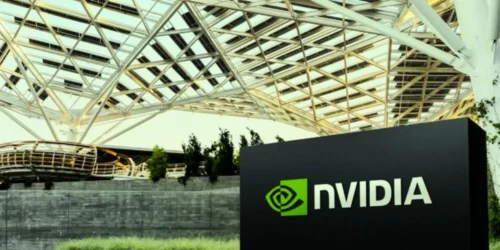Diplomacy is not the elegant, white-gloved affair of popular imagination. It is not a polite conversation over tea, ending in a neat treaty. Real diplomacy is a gritty, high-stakes, and often bruising business. It is a relentless series of calculations, gambles, and compromises, conducted by flawed human beings under immense pressure. It is a process of managing mistrust, probing for weakness, and searching, often desperately, for the faintest sliver of common ground. At its heart, it is the art of the possible, the ceaseless effort to choose dialogue over destruction.
There is no greater or more consequential case study of this art in the modern world than the relationship between the United States and the People’s Republic of China. For over half a century, the American Eagle and the Chinese Dragon have been locked in the most complex and fraught diplomatic dance in human history. It is a story that begins in the frozen silence of ideological hatred, moves to a stunning secret handshake that reshaped the world, blossoms into an unprecedented economic embrace, and now stands at the precipice of a new and dangerous confrontation.
This is not a dry recitation of treaties and communiqués. This is a case study of the very essence of diplomatic relations: how they are born, how they mature, and how they can decay. We will journey from the clandestine meetings that broke a two-decade silence to the gleaming boardrooms that powered globalization, and finally, to the tense standoffs in the South China Sea that define our era. We will explore the motivations, miscalculations, and profound, often unintended, consequences of this relationship.
To understand the 50-year dance of the Dragon and the Eagle is to understand the forces that have shaped our globalized world and the fault lines that now threaten to tear it apart. It is a story of ambition, ideology, and the eternal, difficult work of managing rivalry between great powers. It is a stark reminder that in diplomacy, there are no permanent friends or permanent enemies, only permanent interests and the constant, perilous need to talk.
The Great Wall of Silence (1949-1971)
To grasp the earth-shattering significance of the U.S.-China opening in the 1970s, one must first appreciate the absolute, ideological chasm that separated the two nations for more than two decades. This was not a friendly disagreement. It was a cold, hard, and occasionally bloody reality.
The story begins in 1949, with the victory of Mao Zedong’s Communist forces in the Chinese Civil War. The defeated Nationalists, led by Chiang Kai-shek, fled to the island of Taiwan. For the United States, which had backed the Nationalists, this was a catastrophic failure. They saw the “loss” of China as a massive victory for the global Communist conspiracy directed by Moscow. In response, the United States refused to recognize the new People’s Republic of China (PRC) led by Mao. Instead, they continued to recognize Chiang’s rump state in Taiwan, the “Republic of China” (ROC), as the sole legitimate government of all of China.
This was not a diplomatic fiction; it was a core tenet of American foreign policy. The tiny island of Taiwan held China’s seat on the powerful United Nations Security Council. The vast mainland, home to a quarter of the world’s population, was treated as a pariah state, an outlaw regime.
The chasm deepened into a canyon of blood during the Korean War (1950-1953). When U.S.-led UN forces pushed deep into North Korea, threatening China’s border, Mao sent hundreds of thousands of “volunteers” pouring across the Yalu River. Chinese and American soldiers killed each other in brutal, frozen combat. For the next two decades, they were not just rivals; they were battlefield enemies.
In America, the PRC was portrayed as a godless, monolithic “Red China,” a brainwashed horde bent on world domination. In China, the United States was the ultimate “imperialist aggressor,” the capitalist enemy determined to strangle the revolution in its cradle. There were no embassies, no trade, no cultural exchange, no phone calls. There was only a profound and dangerous silence, punctuated by occasional military standoffs over tiny islands in the Taiwan Strait.
For twenty-two years, the most powerful nation on Earth and the most populous nation on Earth existed in separate, hostile universes. Any American diplomat who suggested opening a dialogue with Beijing would have been committing career suicide, likely branded a Communist sympathizer. The Great Wall between them seemed as permanent and impenetrable as the one made of stone. No one could have predicted that the man who would dare to breach that wall would be one of America’s most staunch and famous anti-communists: Richard Nixon.
The Secret Handshake – The Geopolitical Earthquake of the Opening (1971-1979)
The thaw did not begin with a change of heart. It began with a cold, hard calculation of strategic interest. By the late 1960s, the world had undergone significant changes. The once-monolithic Communist bloc had fractured, with China and the Soviet Union devolving from allies into bitter, ideological rivals who even engaged in border skirmishes. For a strategic thinker like President Richard Nixon and his brilliant, ambitious National Security Advisor, Henry Kissinger, this rift presented a staggering opportunity.
Their logic was pure realpolitik. They viewed the world as a three-way contest between the United States, the Soviet Union, and China. By engaging with China, the U.S. could gain immense leverage over its primary adversary, the Soviet Union. The Soviets would be forced to contend with a potential two-front threat, moderating their behavior. As Kissinger famously put it, “The enemy of my enemy is my friend.” For Nixon, it was also a bold, legacy-defining move that could help extricate the United States from the quagmire of the Vietnam War, as China was a key patron of North Vietnam.
The problem was how to break two decades of silence without causing a domestic political firestorm or spooking the Soviets prematurely. The answer was a masterclass in clandestine diplomacy, a delicate dance of secret signals and back-channel communications that felt more like a spy thriller than statecraft.
The Signals
The U.S. began sending subtle signals. They relaxed travel and trade restrictions. Nixon began referring to the country as the “People’s Republic of China” in public documents, a subtle yet significant semantic shift.
The Back Channel
Pakistan was the crucial intermediary. Messages were passed from the White House, through the Pakistani embassy in Washington, to their counterparts in Beijing. It was a slow, nerve-wracking process of building trust through a trusted third party.
Ping-Pong Diplomacy
The public breakthrough came from an unlikely source: a ping-pong table. In April 1971, during the World Table Tennis Championships in Japan, the Chinese team unexpectedly invited the American team to visit China. This was no accident; it was a carefully choreographed public signal from Beijing that they were ready to engage in talks. The images of young Americans visiting the Forbidden City and shaking hands with Chinese officials captivated the world.
The real drama happened three months later. In July 1971, while on a trip to Pakistan, Henry Kissinger feigned a stomach illness. He was secretly whisked away to a Pakistani airfield and boarded a plane for Beijing. For 48 hours, he was completely off the grid, meeting face-to-face with Chinese Premier Zhou Enlai. It was a massive gamble. Had the secret leaked, the mission would have failed, and the political fallout would have been immense.
In the cavernous Great Hall of the People, Kissinger and Zhou, two masters of the diplomatic craft, laid the groundwork for a presidential visit. They navigated the single most difficult issue—Taiwan—with a deliberate, constructive ambiguity that would define the relationship for decades. The U.S. would “acknowledge” that people on both sides of the strait believed there was “one China,” a masterpiece of diplomatic wording that allowed both sides to save face and move forward.
The climax of this secret dance was Nixon’s visit to China in February 1972. The images were stunning: the American president, who had built his career on fighting communism, shaking hands with the revolutionary icon Mao Zedong. The world watched, transfixed. Nixon’s trip was not just a diplomatic visit; it was a geopolitical earthquake. It fundamentally reordered the global balance of power.
The process of “normalization” was slow and deliberate. It culminated on January 1, 1979, when President Jimmy Carter formally switched U.S. diplomatic recognition from Taipei to Beijing. The United States severed its mutual defense treaty with Taiwan and opened a full embassy in the PRC. The Great Wall of Silence had been decisively breached. The foundation for the next, even more transformative, phase of the relationship had been laid.
The Golden Age of Engagement – The Great Bet on “Chimerica” (1980-2008)
With the formal establishment of diplomatic relations, the logic of the relationship began to shift. The original driver—the strategic imperative to counter the Soviet Union—faded with the end of the Cold War. It was replaced by a new, and even more powerful, logic: economics.
This era was defined by what came to be known as the policy of “engagement.” At its core was a powerful and deeply held belief in Washington, shared by both political parties: that by integrating China into the global capitalist system, the United States could transform it. The theory was that economic liberalization would inevitably lead to political liberalization. As a Chinese middle class emerged, they would demand more freedoms, greater property rights, and eventually, democracy. Trade and investment were not just about profits; they were instruments of peaceful, democratic change. This was “The Great Bet.”
The catalyst for this new era was Deng Xiaoping’s “Reform and Opening Up” policy in China. Deng, a pragmatic survivor of Mao’s purges, understood that the Communist Party’s legitimacy depended on delivering economic prosperity. He de-collectivized agriculture and opened up the country to foreign investment.
The synergy was explosive. American corporations saw a dream come true: a vast, untapped market and a disciplined, low-cost labor force. Chinese leaders saw a path to modernization, technology transfer, and wealth. The relationship transformed from a strategic alliance into a symbiotic economic partnership. Historian Niall Ferguson would later coin the term “Chimerica” to describe this deeply intertwined entity.
The Factory of the World
U.S. companies, such as Nike, Apple, and General Motors, have relocated their manufacturing operations to China, taking advantage of the country’s low labor costs. This shift has led to a surge in affordable consumer goods for Americans and generated tens of millions of jobs in China, lifting an unprecedented number of people out of poverty.
Joining the Global Club
The symbolic peak of this era came in 2001, when, with strong U.S. backing, China joined the World Trade Organization (WTO). This was the ultimate seal of approval, fully integrating China into the rules-based global trading system.
The Financial Embrace
The dynamic created a massive trade imbalance. The U.S. bought far more from China than it sold. China, in turn, accumulated vast sums of U.S. dollars, which it then used to buy U.S. Treasury bonds. In effect, China was lending America the money to buy Chinese goods. This financial interdependence bound the two nations even closer together.
This “Golden Age” was not without its severe strains. The brutal crackdown on pro-democracy protestors in Tiananmen Square in 1989 sent a shockwave through the relationship. For a time, it seemed the engagement policy might collapse. There were also constant frictions over human rights, intellectual property theft, and the occasional military incident, like the 2001 collision between a U.S. spy plane and a Chinese fighter jet.
But through it all, the economic logic always prevailed. The allure of the Chinese market and the benefits of cheap production were too powerful to ignore. The business community became the most powerful lobby in Washington for maintaining a stable relationship. The Great Bet—that China would, eventually, become more like us—remained the guiding assumption. For nearly three decades, the dance of the Dragon and the Eagle was a waltz of mutual enrichment, even if their steps were not always in perfect sync.
The Cracks Appear – The End of “Hide and Bide” (2008-2016)
The 2008 global financial crisis was a profound psychological turning point. The crisis, which began in the United States, shattered the myth of infallible Western financial management. While the American and European economies sputtered, China, with its state-directed stimulus, continued to grow robustly. In Beijing, a new narrative began to take hold: the American model was flawed and in decline. In contrast, the Chinese model of state-led capitalism was resilient and superior.
This shift in mindset coincided with a change in leadership. In 2012, Xi Jinping came to power. Unlike his predecessors, who had followed Deng Xiaoping’s maxim to “hide your strength and bide your time,” Xi was a far more assertive and nationalistic leader. He spoke of a “China Dream” of national rejuvenation. He made it clear that he had no intention of following the Western path of political liberalization. The era of “hide and bide” was over.
Across the Pacific, the foundations of The Great Bet were beginning to crumble. American policymakers and business leaders started to realize that three decades of engagement had produced a very different outcome than the one they had envisioned. China had not become more like the U.S. It had become an immensely powerful economic competitor that still operated under a fundamentally different, and often adversarial, set of rules.
The cracks in the relationship began to widen into visible fissures.
The South China Sea
China began an aggressive campaign of building and militarizing artificial islands in the disputed waters of the South China Sea, a vital global shipping lane. It was a direct challenge to the U.S. Navy’s long-standing role as the guarantor of freedom of navigation in the Pacific.
Cyber Warfare
U.S. intelligence agencies and corporations reported a massive, sustained campaign of Chinese state-sponsored cyber espionage, targeting everything from military secrets to corporate intellectual property. This was no longer just about stealing product designs; it was seen as a wholesale digital heist of American innovation.
Economic Predation
The complaints from American businesses grew louder. They spoke of forced technology transfer, regulatory hurdles that favored domestic Chinese firms, and the immense scale of state subsidies that gave Chinese companies an unfair advantage on the global stage.
The End of Hope for Political Reform
Under Xi, any space for domestic dissent in China was ruthlessly crushed. The crackdown on lawyers, journalists, and civil society, culminating in the horrific abuses against the Uyghur population in Xinjiang, made it impossible for even the most optimistic proponent of engagement to argue that China was on a path to democracy.
The Obama administration attempted to manage these new tensions with a “Pivot to Asia,” shifting diplomatic and military resources to the region. They engaged in a mix of cooperation on issues like climate change and confrontation on security issues. But the underlying dynamic had fundamentally changed. The era of optimistic engagement was over, replaced by a growing sense of unease and disillusionment. The dance was becoming increasingly tense, with the partners growing more wary. They were no longer waltzing; they were circling each other, sizing each other up for a new kind of competition.
The Showdown – Competition, Confrontation, and the Search for Guardrails (2017-Present)
If the Obama years were about the growing realization that the old relationship was broken, the Trump administration took a sledgehammer to it. President Donald Trump viewed the relationship not through the lens of strategic engagement, but as a simple zero-sum transaction in which America was being “ripped off.”
In 2018, Trump launched a full-blown trade war, imposing tariffs on hundreds of billions of dollars of Chinese goods. China retaliated with its tariffs. The move shattered the decades-old consensus that economic interdependence was an unalloyed good. The Trump administration labeled China a “strategic competitor” and a “revisionist power,” language that would have been unthinkable just a decade earlier. The decoupling, once a fringe idea, had begun to take hold.
The COVID-19 pandemic served as a massive accelerant, fueling the fires of mistrust. The initial outbreak in Wuhan, Beijing’s lack of transparency, and a bitter war of words over the virus’s origins sent relations plunging to their lowest point since before the 1972 opening of relations. The pandemic brutally exposed the vulnerability of global supply chains, prompting a new urgency in Washington and other Western capitals to reduce their dependence on China for critical goods, such as medical supplies and pharmaceuticals.
The Biden administration, which took office in 2021, softened the rhetoric but largely continued the tough underlying policy. They framed the relationship as one of “stiff competition,” a three-part approach of being “competitive when it should be, collaborative when it can be, and adversarial when it must be.”
The new era of confrontation is focused on several key flashpoints:
The Technology War
The central battleground is now technology. The U.S. is utilizing powerful tools, such as export controls and entity lists, to prevent China from acquiring the most advanced semiconductors and the equipment necessary for their manufacture. This is a direct attempt to kneecap China’s technological ambitions and preserve America’s edge, particularly in technologies with military applications like AI.
Taiwan
The island of Taiwan has re-emerged as the single most dangerous flashpoint on Earth. Xi Jinping has made the “reunification” of Taiwan with the mainland a cornerstone of his national rejuvenation project and has not ruled out the use of force. The United States, while still adhering to its “One China” policy, has deepened its unofficial ties with Taiwan and has made its commitment to the island’s defense more explicit. A conflict over Taiwan would be an economic and military catastrophe for the entire world.
Alliances and Ideology
The competition has become explicitly ideological. President Biden frames it as a global contest between democracy and autocracy. The U.S. is working to strengthen its alliances in the Indo-Pacific, with Japan, South Korea, and Australia, as well as through new groupings like the Quad (comprising the U.S., Japan, India, and Australia) and AUKUS (comprising Australia, the U.K., and the U.S.). This effort aims to create a united front to counter Chinese influence.
The diplomatic challenge of this new era is profoundly different from the past. The goal is no longer to integrate China into the existing order. The goal is to manage an intense, long-term rivalry with a peer competitor without stumbling into a catastrophic war. The new buzzword in Washington is “guardrails”—finding ways to maintain open lines of communication, establish crisis management mechanisms, and set clear red lines to prevent competition from escalating into conflict. The dance has become a tense, precarious balancing act on a high wire, with no safety net below.
Conclusion: Lessons from a Half-Century Dance
The 50-year diplomatic relationship between the United States and China is a sprawling, epic drama with no final act yet written. But as we stand amid this new, more dangerous chapter, we can draw several profound lessons from the journey so far.
The dance of the Dragon and the Eagle continues, but the music has changed. The easy, optimistic waltz of the engagement era is over. The new music is dissonant, tense, and unpredictable. The challenge for this generation of diplomats is to learn the steps to this new, more dangerous dance. It requires a clear-eyed understanding of the nature of the competition, a firm commitment to defending one’s interests, and yet, an absolute, unwavering recognition that dialogue is the only alternative to catastrophe. The Great Wall of Silence that once separated them was a tragedy. The single greatest tragedy of the 21st century would be to allow it to be rebuilt.

